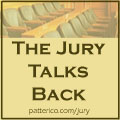[guest post by Dana]
The New York Times reports that White House trade adviser Peter Navarro sent a memo to the National Security Council and other administration officials, including then acting chief of staff, Mick Mulvaney, warning about a possible pandemic. The report notes that it is not known whether President Trump saw the memo:
A top White House adviser starkly warned Trump administration officials in late January that the coronavirus crisis could cost the United States trillions of dollars and put millions of Americans at risk of illness or death.
The warning, written in a memo by Peter Navarro, President Trump’s trade adviser, is the highest-level alert known to have circulated inside the West Wing as the administration was taking its first substantive steps to confront a crisis that had already consumed China’s leaders and would go on to upend life in Europe and the United States.
“The lack of immune protection or an existing cure or vaccine would leave Americans defenseless in the case of a full-blown coronavirus outbreak on U.S. soil,” Mr. Navarro’s memo said. “This lack of protection elevates the risk of the coronavirus evolving into a full-blown pandemic, imperiling the lives of millions of Americans.”
…
Mr. Navarro said in the memo that the administration faced a choice about how aggressive to be in containing an outbreak, saying the human and economic costs would be relatively low if it turned out to be a problem along the lines of a seasonal flu.
But he went on to emphasize that the “risk of a worst-case pandemic scenario should not be overlooked” given the information coming from China.
The memo was dated January 29. This was the same day that the White House announced the formation of the Coronavirus Task Force. One day later, WHO declared a global health emergency and President Trump said during a speech in Michigan, that there was nothing to worry about:
“We think we have it very well under control. We have very little problem in this country at this moment — five — and those people are all recuperating successfully. But we’re working very closely with China and other countries, and we think it’s going to have a very good ending for us … that I can assure you.”
On January 31, the United States enacted travel restrictions on China.
A partial breakdown of the memo:
The Jan. 29 memo set out two stark choices: “Aggressive Containment versus No Containment.”
Navarro compared cost estimates for the choices and wrote that the Council of Economic Advisers’ estimates for stopping travel from China to the U.S. would be $2.9 billion per month. If the virus turned out to be a pandemic, that travel ban could extend 12 months and cost the U.S. $34.6 billion.
Doing nothing (the “No Containment” option) could range from “zero economic costs” to $5.7 trillion depending on the lethality of the virus.
On February 23, Navarro sent another memo. This came three days after the WHO reported that there were nearly 77,000 cases worldwide in 27 countries. In the memo, he warned of an “increasing probability of a full-blown COVID-19 pandemic that could infect as many as 100 million Americans, with a loss of life of as many as 1.2 million souls.”
One day after the second memo was sent, President Trump told Americans that the situation was “very much under control”:
Especially significant:
…the memo called for an increase funding for the government to purchase personal protective equipment for health care workers, estimating they would need “at least a billion face masks” over a four-to-six-month period.
Ultimately:
Mr. Navarro’s memo is evidence that some in the upper ranks of the administration had at least considered the possibility of the outbreak turning into something far more serious than Mr. Trump was acknowledging publicly at the time.
The memos appear to undercut President Trump’s continued claims that everything was under control, when in fact, it wasn’t. On March 17, the President admitted that it was a pandemic, while giving himself a pat on the back:
“This is a pandemic. I felt it was a pandemic long before it was called a pandemic.”
–Dana


